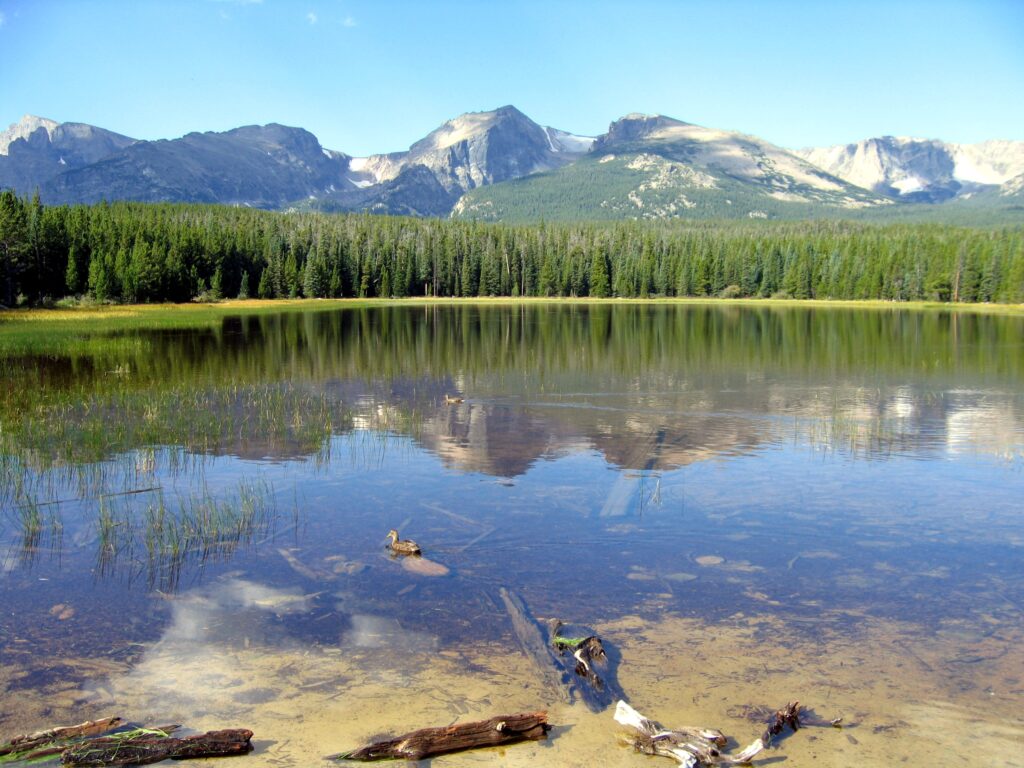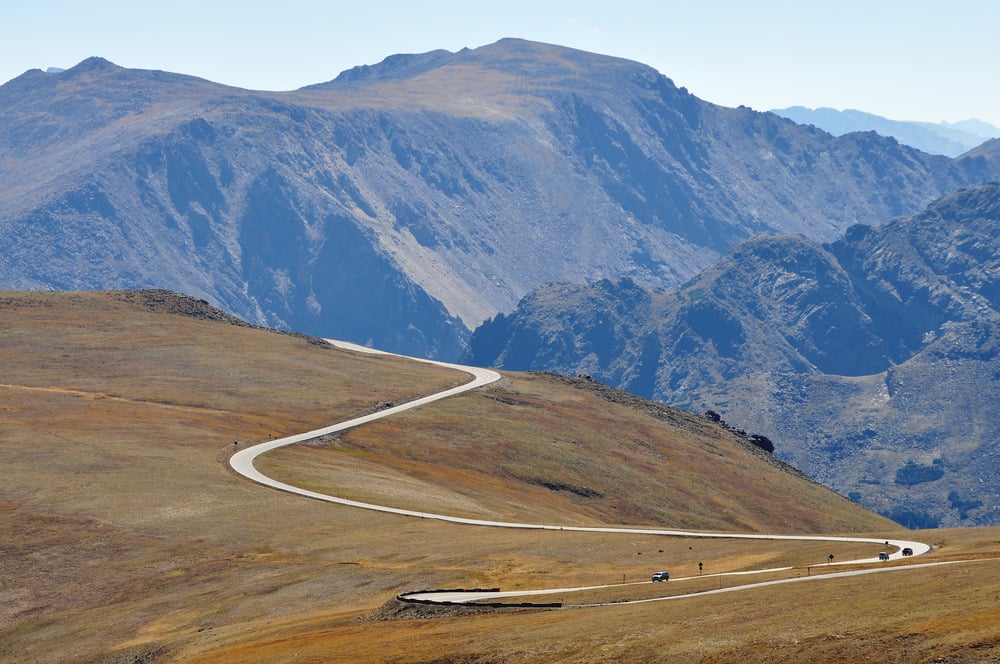
Visit The Crown Jewel Of Colorado’s National Parks
“On a crisp fall day, I stand on the shore of a lake that is sparkling with a million sunlit stars across it; the warm sun on my face making a noticeable contrast to the coolness of the breeze at my back. The day is a perfect blend of summer shorts and soft fall flannel shirts. Flattop Mountain and the Bighorn flats seem to stand guard over the abundant wildlife in the valley floors where the golden leaves of the aspen trees are glowing with the backlighting of the sun. The gentle breezes play along the lake surface, painting strokes of light sparkles as they move. It is the perfect backdrop to a day that breathes the promise of a rugged hike, then warm soup and fresh bread.”
Exploring Rocky Mountain National Park
Rocky Mountain National Park is the crown jewel of Colorado’s National Parks and Monuments. It is located between Estes Park on the east side and Grand Lake on the west side, about an hour and a half drive northwest from Denver.
As one of the largest and most visited National Parks, averaging over 3 million visitors each year, the park boasts some of the highest elevation of all the National Parks (with over 75 peaks over 12,000 feet), is home to the headwaters of the Colorado River and Cache la Poudre River, and straddles the Continental Divide. The park is open year-round, and at any time of the year, a visitor can quickly see how special “Rocky” is.
Rocky Mountain National Park was established in 1915 by Woodrow Wilson as the ninth National Park. Today it encompasses over 415 square miles ranging from 7,840 feet by the east park entrance to 14,259 feet at the summit of Longs Peak.
Over 95% of the park is wilderness, spanning from the lower moosey marshes, over the moraines, to the alpine tundra, and the high snowy peaks of the Never Summer Range.
More than a third of the park is above treeline (the altitude at which trees can grow). Trail Ridge Road, which allows travel 48 miles through the park from Estes Park to Grand Lake, is the highest paved roadway in America topping out at a driving elevation of 12,183 feet, and one of 11 designated America’s Byways in Colorado.
Trail Ridge Road is not maintained during the snowy winter months but makes for a spectacular summer travel route.

Trail Ridge Road above timberline (Photo by NPS)
Although the park sees many visitors each year, there is plenty of space to get away from people and enjoy the wilderness. The park affords exceptional access to some of the most iconic Colorado scenery and high alpine ecosystems.
While only 100 miles of roads (28 of those on unpaved roads) are available for vehicle access, there are over 355 miles of backcountry hiking trails! There are 147 lakes and 450 miles of streams, many with fish including the threatened greenback cutthroat trout.
Some of Colorado’s oldest rocks can be found in the mountains of Rocky Mountain National Park, carved into exquisite landscapes by glaciers and rivers. Several small glaciers are still found in the high peaks within the park.
The park is listed as a United Nations Educational, Scientific, and Cultural (UNESCO) international biosphere reserve and globally important bird area. Portions of the park’s montane, subalpine, and alpine ecosystems are managed as research natural areas for scientific and educational purposes.
Camping in Rocky Mountain National Park
The park has five visitor centers and four RV-friendly campgrounds that are open usually from late May to mid-September. Backcountry camping is also available year-round. Additional camping options can be found in Estes Park as well as in and around Grand Lake. You can find these campgrounds, as well as other nearby RV parks and attractions, with RV LIFE Trip Wizard and the RV LIFE App With RV-Safe GPS.

How do you become a camp host